Dragon Strategy – Fist of Fury
The elemental cycle has been a big one for the Dragon. The Monk theme is a core aspect of the Dragon Clan that many wanted to explore, but up until now, the deck hasn’t been viable. Additions like Togashi Mitsu, Hurricane Punch, and Void Fist have most certainly changed that. The Monk trait is now a key element in Dragon’s most competitive deck. Dragon players can now live the dream of Kung-Fu fighting their way through tournaments. But what is that deck going to look like?
Despite some suggestions to the contrary, the most successful Dragon deck from the Imperial environment wasn’t created by one or two Dragon players in a moment of genius. The card pool is so narrow that the main interactions are immediately obvious. It wasn’t a revelation that Pathfinder’s Blade is great on Niten Master, it’s no surprise that having Feast or Famine along with Restoration of Balance in your province row is strong. What sets apart successful players is the process of refining those decks. Determining which great cards get cut to keep the deck consistent and which cards are added to strengthen the deck against specific matchup. Being able to accurately predict the meta and refine the deck to adjust for that is absolutely key as you can only afford to lose 1 game in a tournament.
We saw the importance of the metagame following the release of A Fate Worse Than Death where Dragon’s performance took a sudden dive. At the Irish Kotei, I played 3 Finger of Jade but didn’t double down with Censure, a costly mistake. In time, it became the norm for Dragon decks to play 3 of each, although each have multiple uses, A Fate Worse Than Death was definitely the catalyst. Moving into the new metagame with the Elemental Cycle many things will change, but not everything. We still need to account for the lessons of the previous meta games even as we attempt to present problems for our opponent to deal with.
In my previous article, I talked about how the Dragon playstyle focused on pre-emptively denying your opponent options. The Dragon deck used it’s efficient dynasty to generate a powerful board but struggled when that board was disrupted. This in part was due to a lack of actual proactive ‘problem solvers’, especially on the conflict side. In the Elemental Cycle the Dragon clan received two key cards that change this: Hawk Tattoo and Void Fist. Both of these cards provide opportunities to disrupt an opponent’s board. The Dragon now have claws.
To get a better idea of the options let’s go through the viable cards.
Dynasty Deck
Provinces
For the provinces, we have only a minor change. Restoration of Balance, Feast or Famine, and Shameful Display all remain very strong inclusions in the province row. The stronghold province remains Rally to the Cause. The change is taking Manicured Gardens out and replacing it with Sacred Sanctuary. This province can be a weak spot if you have no Monks in play, but the powerful impact it has when you do have a Monk is definitely worth the risk. This selection does assume the Seeker of Fire role is still in effect. If played with the new Keeper of Void role (or any Keeper role), Feast or Famine gets replaced with an Earth province, most likely Upholding Authority in the province row. If played with another Seeker Role then you double up in the province row with the two best provinces of that elemental type looking to maximize the fate gain.
Holdings
For holdings, we’re looking at 3 Imperial Storehouse and 3 Favorable Ground as core cards, with The Imperial Palace as a potential option. Imperial Storehouse is a free conflict card while Favorable Ground has become increasingly important due to the movement tricks recently introduced. The Imperial Palace makes the slot if we’re playing Censure. If we take all of those we’re looking at 33 cards remaining in a 40 card dynasty deck, or 11 characters at 3 copies each. So we will have some aggressive cuts to make. Let’s assume we leave out the Palace, for the time being, then we run:
Below are two suggested dynasty builds, as the above selection shows there is a range of options where you can tweak to your own personal taste. Regardless what the current ‘top’ Dragon deck might be, successful players will play a deck suited to their own style and tailored against their expected meta, so take any suggestions of a one ‘true’ way with a suitable helping of salt.
Dynasty Characters
Up until recently, the dynasty deck for Dragon was fixed. The clan has some fantastic characters that immediately went into decks and a number of clunky duds that weren’t worth consideration. The Elemental cycle has expanded those options and now the Dragon are faced with some actual deckbuilding decisions. I’ve split the characters up by their Fate cost below, but I should note I’m not a believer in the idea of a cost curve. As such, I wouldn’t recommend making selections based on the numbers from each cost.
5 Cost Characters
- Togashi Yokuni – Yokuni is one of the best clan champions in the game and his ability only improves as the rest of the dynasty deck does. When Dragon get a new character with an ability, Yokuni gets another target to copy and gains even more utility.
- Togashi Mitsu – A new star in the Dragon deck. Not quite the stats of Yokuni but his card recursion ability is fantastic and his inbuilt Covert makes up for any lack of stats.
- Agasha Sumiko – Being able to attack without bowing due to conflict resolution can win games.
Unfortunately, if you don’t have the imperial favor or if she gets dragged into a defending conflict with Hawk Tattoo she is a blank 4/4. Currently, we’re expecting Hawk Tattoo to be prevalent in the meta, which is a strike against her, but if we decide to not run Censure then she probably doesn’t make the cut.
4 Cost Characters
- Niten Master – This character has been the core engine of the Dragon deck for the Majority of matchups. Results have shown us that any character that can ready themselves is worth a slot. To support this the conflict deck needs 3 Fine Katana and at least another 3 weapons. During the Imperial cycle Dragon typically ran 3 Fine Katana, 3 Pathfinder’s Blade, and 2 Ancestral Daisho. Dropping to just 3 Katana will make the Master much less reliable but will free up conflict slots, so don’t be afraid to experiment by leaving this Master out.
- Master Alchemist – The Alchemist is a new addition but has already been well recommended. The ability to honor or dishonor a character for 1 Fate helps support and protect our big 3 glory characters of Mitsu and Yokuni. The honor loss and gain associated helps keep us afloat or pressures our opponent. It is also relatively easy to make sure the Fate is reclaimed.
- Ascetic Visionary – The Ascetic Visionary comes from the Core box, but was not playable until recently. Indeed, his inclusion in this list may raise some eyebrows. The Visionary can only have Monk or Tattoo attachments, of which there were not many until recently. His ability can only be used while he is attacking and can only target a Monk character, which was in short supply. That said, he has a great stat-line, is a Monk, and the card pool has expanded enough to make him at least playable.
- Togashi Tadakatsu – Tadakatsu, similar to the Visionary, has great stats and the Monk trait. Frustratingly, his ability is a two-edged sword that can help your opponent more than you and there are definitely some matchups where you will discard him rather than playing him. Again he is a big monk who works well with the rest of the Monk card pool. With the Keeper role, he improves, as you can force your opponent to pick Void allowing you to defend and win to gain that 1 point of Keeper Fate and fetch those Keeper Initiates for the next conflict.
3 Cost Characters
- Mirumoto Raitsugu – Often considered the greatest duellist in the current card pool, Raitsugu is one of the few examples of reusable personality kill and remains an MVP in any Dragon deck.
- Kitsuki Investigator – With the inclusion of Policy Debate on the restricted list, the investigator is one of the best forms of hand control in the game.
- Agasha Shunsen – Shunsen is a new addition to the Dragon clan who has some fantastic potential. As his ability requires returning your claimed rings, he doesn’t gel well with decks that are looking for the favor. His ability does allow Dragon to play a number of single card attachments fetching them when needed.
2 Cost Characters
- Agasha Swordsmith – The swordsmith has been a stable from day 1. Played primarily for the ability which lets you draw the best attachment out of the top 5 cards in your deck.
- Seeker of Enlightenment – At 2 fate the Seeker can either be a cheap investment for a ton of skill or an over-costed 1/1 depending on the board state. With abilities such as the Master Alchemist and Kitsuki Investigator in play, fate on rings can be modified to make her even more effective.
- Niten Adept – The Adept had fallen out of favor of late but still provides a fantastic ability that can have a big impact. He is somewhat meta dependent as his ability is negated by either your opponent playing attachments on their characters and the Adept’s attachment being stolen or destroyed.
- Keeper Initiate – These have been great for other clans with Keeper roles, and they couldn’t capitalize on the Monk trait!
- Seeker Initiate – Long considered unplayable due to his poor statline. The Monk trait could potentially be enough to make the Seeker playable, but this has yet to be evidenced.
- Miya Mystic – Less of a character more of a dynasty meta slot, the Mystic is important in matchups where your opponent has more powerful attachments than can easily be handled by just Let Go. Currently, this includes Crab, Dragon, and Unicorn.
1 Cost Characters
- Doomed Shugenja – Still one of the most efficient characters in the game, might never leave Dragon decks.
- Togashi Initiate – A cheap Monk, with an extra 1 fate this can turn into an impressive 3/3. If you can get the fate back, for example, you’ll be attacking first next turn this ends up being better than Doomed Shugenja.
- Togashi Mendicant – Again another cheap Monk. While the ability can be useful, you do need to actively remember to use it. This is the weakest of the 1 cost characters.
Three of these characters, the Ascetic Visionary, Togashi Tadakatsu, and the Seeker of Enlightenment, did not make the grade prior to the Elemental cycle but due to the Monk trait slip back into the list. Of the remainder, only Togashi Mitsu and two of the 1 cost characters, Togashi Initiate and Togashi Mendicant, have the Monk trait which does pose a problem. This gives us the first decision point. We can either go heavy into the Monks giving up some of the more powerful Dragon characters to make room or we can go light on Monks and rely on the Seal of the Dragon from the conflict deck to turn key characters into Monks.
Sample Builds
Monk Heavy
In the Monk heavy deck, we are highly favoring the Monk trait. This means the Monk only cards will be very reliable but it will mean greater characters without the Monk trait for less effective characters who do have the trait. There are only so many slots after all. This version assumes we’re playing the keeper role and makes use of 3 Keeper Initiates.
- 2x Togashi Yokuni
- 3x Togashi Mitsu
- 3x Niten Master
- 2x Ascetic Visionary
- 2x Togashi Tadakatsu
- 2x Mirumoto Raitsugu
- 2x Kitsuki Investigator
- 2x Agasha Shunsen
- 3x Agasha Swordsmith
- 2x Seeker of Enlightenment
- 3x Keeper Initiate
- 3x Doomed Shugenja
- 3x Togashi Initiate
- 2x Togashi Mendicant
With 17 Monks in total, we’ve had to make some pretty rough sacrifices. This build is assuming we’re not interested in getting the Imperial Favor and has dropped The Imperial Palace to get an extra slot. If we do wish to play Censure we could drop a character, probably a Togashi Mendicant to add it back in.
Hybrid
In the Hybrid deck, we’re focusing on the good characters first and the Monk trait second. We will need, most likely, need to supplement the dynasty deck by playing 3 cores of Seal of the Dragon on the conflict side. Getting this Monk balance will be crucial, too few and the power cards in the deck won’t be useful, too many and you’re having to sacrifice powerful characters purely because they don’t have the Monk trait. In this version we’re assuming a seeker role, although we would want to make room for Keeper Initiates if we were playing Keeper instead.
- 2x Togashi Yokuni
- 3x Togashi Mitsu
- 2x Agasha Sumiko
- 3x Niten Master
- 2x Master Alchemist
- 3x Mirumoto Raitsugu
- 3x Kitsuki Investigator
- 3x Agasha Swordsmith
- 3x Miya Mystic
- 3x Doomed Shugenja
- 3x Togashi Initiate
- 3x Togashi Mendicant
Here the cuts we’ve made primarily hit the Monk characters. This ends up in a much better line up but less reliable Monk trait. This version assumes the imperial favor is the focus and leaves 1 slot for The Imperial Palace, but if it was not we could exchange Agasha Sumiko for Agasha Shunsen. With only 9 Monks we are very reliant on Seal of Dragon to make sure we have a Monk when our opponent attacks our Sacred Sanctuary first turn.
Conflict Deck
Moving over to the conflict side things get even more complex. The available card pool is much greater and the typical rate of conflict card draw in the game makes the conflict deck very important. While the Dynasty can be seen as the basis, the Conflict deck is where all the real decisions are made.
Core Cards
We have a few cards we definitely want to run 3 of, core cards whose value is undisputed. There are a total of 7 individual cards in this category account for over half the conflict deck at 21 card slots already:
- 3x Court Games – Court games has been a 3 of in pretty much every successful deck since the start of the game, nothing has changed.
- 3x Fine Katana – A free +2 military, an attachment to power the stronghold, and a weapon to trigger Niten Master.
- 3x Ornate Fan or 3x Seal of the Dragon – Similar to the Fine Katana but focusing on political instead of military and lacking the weapon trait for the Niten Master. As political skill is typically a little harder to get that omission can be overlooked. In the Hybrid deck, we can downgrade the Fans to Seals to give better access to the Monk trait. Doubling could be an option but would probably be too much.
- 3x Tattooed Wanderer – As a character the Wanderer is super efficient, and the option to give another character covert instead can win games.
- 3x Hawk Tattoo – Current speculation is that this card will be everywhere, luckily Dragon get to play it without needing to spend influence. It messes with your opponent’s assignments and gets around Covert which is increasing in popularity. It also can counter your opponent’s Hawk Tattoo. If it doesn’t turn out to be as amazing as people are expecting, it might slip down to 2 of, but I can’t see it every going any less without the designers adding it to the restricted list or issuing an errata.
- 3x Hurricane Punch – A new addition to the clan, this +2 military boost is worth playing for the card draw. This essentially makes the military bonus completely free and tightens up your deck making everything just a little bit better. Apart from being a useful military boost, it provides a setup for Void Fist.
- 3x Void Fist – This is the finisher for Dragon. This card is the reason you want to play Monk and is a powerhouse of a card. You might end up playing some weird conflict actions as you wind up to fulfill the conditions, but once you play it, Void Fist will win you conflicts and probably games.
Core Options
Next, we have cards that could be considered core but have situational value so they might not make the cut depending on decisions made during earlier parts of deck design.
- 2x Ancestral Daisho – While the Daisho has some merits, really you’re only playing this to support the Niten Master. The pre-Elemental build played 2 copies along with Pathfinder’s Blade and Fine Katana for a total of 8 Weapons. Depending on our splash we could do similar or could go non-Crab splash with 3 Daisho to accommodate.
- 2x Banzai! – With 4 skill for a card and 1 honor, Banzai! has always been popular. It doesn’t always make the cut, however, and a lot of Dragon decks dropped to 2 Banzai! which flickered in and out of decklists. This in part was due to the honor loss as Dragon decks leaned heavily on honor for card draw. It is extra military skill and an extra action for Void Fist which improves its value but is a card that could easily get dropped.
- 2x Ancient Master – The Ancient Master is fantastic for taking the Imperial Favor with his 2 glory. As a 1 cost 1/1 Monk, he will always be a handy character to have. If played as an attachment, depending on the kihō and tattoo destiny in your conflict deck, he has a pretty good chance of drawing a card every turn. If you’re playing Censure you might even push him out to 3 to reliably control the favor. Despite all this, he could be cut to make room for other cards.
What about Mantra? Right now there are 3 Mantra cards out: Fire, Water, and Earth. When you can play them, they provide are great, a decent effect and you get to draw a card. The issue with Mantra is when you aren’t able to play them, even if that’s just for one conflict or one turn. Now we have enough Monks, they are a little easier to use than they were before. The dilemma then is waiting for our opponent to declare the right ring for the conflict. Playing Togashi Tadakatsu can help with that, but you can’t rely on having him every turn of every game. Due to this, I consider the Mantra to be unreliable so I haven’t included them here. They are a lot of fun and it’s a fantastic feeling when you trigger 2 or 3 all at once, so take them for a spin and tell me if they’re better than I thought!
Meta Cards
The majority of the cards we’ve looked at so far really just add more skill to help you take provinces. Unfortunately, this is something our opponent is going to try to prevent, so they’ll be playing their own actions and abilities in an attempt to stop us. To keep ahead of this we need to play cards to stop them, meta cards.
- 3x Censure – Censure realistically the only form of action cancellation the Dragon have access to. It requires having the Imperial favor, so Dragon have to work to make sure it is active and it will not be active turn 1. As previously noted, playing Censure will be linked with Agasha Sumiko, The Imperial Palace, and 3 Ancient Master. It is something you need to plan for and play for. If you’re playing Censure you’re not playing Agasha Shunsen whose ability actively hinders you gaining the favor.
- 3x Finger of Jade – As Dragon decks focus on attachments, a single character can end up with a significant card and fate investment. Finger of Jade is a way to protect that investment and can be used against a range of targeting effects like Assassination, A Fate Worse Than Death, Shameful Display or the Covert ability.
- 3x Cloud the Mind – Even as we are looking for characters with great abilities, so is our opponent. A number of characters such as Isawa Tadaka or Kuni Yori have abilities that can turn a game. Cloud the Mind is the answer to that and most clans will run 3.
- 3x Let Go – Dragon are both cursed and blessed to have Let Go in the faction. That it exists at all is a constant frustration reducing the reliability of Dragon attachments, but at least Dragon get to have attachment removal without needing to lock into a specific splash and paying influence.
One-of Cards
There are a few different ways of looking at one-of cards in a deck. They can keep your opponent ‘honest’ as even 1 copy of Assassination in the deck has to be respected as a risk whereas if it is known there are zero copies then your opponent can play in a more advantageous way. The second way is to round out a suite of cards. If we consider the Jade Masterpiece a 4th political skill boost this makes sense. Alternatively, we can look at Adopted Kin as an extra Cloud the Mind or Hawk Tattoo, fetching that card back to hand as an opponent’s character leaves play. Finally, they can be ‘silver bullets’, powerful effects that are there to deal with specific situations. Although the following list has no real examples of this, you could stretch to see Way of the Dragon or Togashi Kazue as cards which have powerful effects but only in a limited situation. Agasha Shunsen does improve the quality of these 1 of attachments, as he can fetch the right attachment at the right moment. Unfortunately, these are often the first few cards on the cutting block, and currently, things are tight.
- 1x Way of the Dragon – The recent influx of new characters with abilities has increased the value of this attachment. It is still 2 cost, which is borderline at best for an attachment but being able to use the Master Alchemist of Togashi Mitsu a second time in the turn is worth it.
- 1x Centipede Tattoo – This might justify a single copy in the deck. Being able to defend, save the province, and then attack is pretty great. Similarly, being able to assign to attack the stronghold, lose the initial conflict but be ready for a follow-up can finish games.
It also has some great potential with Hawk Tattoo allowing you to intentionally lose a conflict with no penalty.There is an argument for 2 or even 3, but deck space is so tight it would need to prove itself through testing. - 1x Jade Masterpiece – On the turn it comes into play, this card pays for itself and denies your opponent one fate. Every turn after that it gains you 1 fate and denies your opponent one.
- 1x Adopted Kin (Fire role only) – This Fire role locked card doesn’t do much, but if you’re willing to wait the turn it will turn into the best attachment on a character leaving play this turn, possibly two.
- 1x Assassination – The 3 honor hit is rough for Dragon, but having the option to deal with an opponent’s 2 cost character can be important especially with characters like Isawa Uona in the environment.
- 1x Togashi Kazue – Kazue is a conflict Monk and had an awesome ability when played as an attachment. At 3 cost, she is quite expensive for an attachment and if your opponent destroys or even worse steals her it is a huge sunk cost. She can be especially effective with Hawk Tattoo allowing you to move in a Monk with Kazue attached and immediately take her action.
- 1x Indomitable Will – Being able to assign a super character, win a conflict, and then stop that character bowing from conflict resolution is fantastic.
- There might be a few other cards that could turn out useful as a one of, especially attachments if we are playing Agasha Shunsen. For example, Smoke or High Kick could prove effective options against Lion and Unicorn military attacks. These one-off slots are an opportunity to express some personalization and strengthen the deck against specific matchups that might otherwise be weak.
Splash
Finally, we need to consider out of faction cards. Right now there appear to be 3 primary splashes for Dragon, those are Crab, Phoenix, and Unicorn. Largely this has been true since the start of the game although some players have had some limited success with Lion and Crane splash.
 Crab have been one of the better splashes for quite a while. Pathfinder’s Blade is a free weapon for Niten Master and negates the most dangerous provinces. Reprieve keeps your best character in play an extra turn while the Skirmisher is an extra Covert. As Pathfinder’s Blade is Seeker only, this splash is best if Dragon are playing a Seeker role which the below splash assumes.
Crab have been one of the better splashes for quite a while. Pathfinder’s Blade is a free weapon for Niten Master and negates the most dangerous provinces. Reprieve keeps your best character in play an extra turn while the Skirmisher is an extra Covert. As Pathfinder’s Blade is Seeker only, this splash is best if Dragon are playing a Seeker role which the below splash assumes.
- 3x Pathfinder’s Blade (Seeker only, Restricted, 1 inf)
- 3x Reprieve (1 inf)
- 2x Hiruma Skirmisher (2 inf)
The elemental cycle has opened up a few new options. With Hawk Tattoo in faction, Jade Tetsubo will always have just the right target. Spreading the Darkness allows you to pump up your Monk ready for Void Fist without an option for your opponent to stop him. If a Water Role is available then Fight On makes for a useful ability allowing you to straighten and move in a character. So Crab remains a viable option even without a Seeker role.
- Jade Tetsubo (2 inf)
- Spreading the Darkness (2 inf)
- The Mountain Does Not Fall (3 inf)
![]() Phoenix had dropped out of favor recently but with the new Monk focus Shrine Maiden becomes a stellar card having both the trait and drawing extra cards. Although we won’t have the same density of Spells and Kihō as the Phoenix deck there is a good chance of drawing a card each time. With the increased number of Shugenja in the deck Against the Waves becomes very reliable.
Phoenix had dropped out of favor recently but with the new Monk focus Shrine Maiden becomes a stellar card having both the trait and drawing extra cards. Although we won’t have the same density of Spells and Kihō as the Phoenix deck there is a good chance of drawing a card each time. With the increased number of Shugenja in the deck Against the Waves becomes very reliable.
- 3x Shrine Maiden (1 inf)
- 3x Against the Waves (Restricted, 1 inf)
There are a range of cards in the Phoenix suite that are interesting but not necessarily amazing. They provide extra options.
- Roving Michibiku (2 inf)
- Clarity of Purpose (3 inf)
- Consumed by Five Fires (Seeker only, 2 inf)
- Karmic Twist (3 inf)
- Display of Power (3 inf)
![]() Last, but not least, we have the Unicorn splash. It provides card draw, ready effects, and checks your opponent’s provinces. All key elements. If Dragon play Keeper, then this is the splash of choice as Talisman of the Sun is an incredibly powerful piece when combined with Restoration of Balance and Shameful Display. Unfortunately, Sacred Sanctuary triggers on attack declaration and not when moved in by the Talisman. It can also be used to move your opponent off your stronghold province into your other unbroken province. The below splash assumes a Keeper role to play the Talisman of the Sun attachment. A big draw of this splash is the lack of restricted card, which opens up additional options.
Last, but not least, we have the Unicorn splash. It provides card draw, ready effects, and checks your opponent’s provinces. All key elements. If Dragon play Keeper, then this is the splash of choice as Talisman of the Sun is an incredibly powerful piece when combined with Restoration of Balance and Shameful Display. Unfortunately, Sacred Sanctuary triggers on attack declaration and not when moved in by the Talisman. It can also be used to move your opponent off your stronghold province into your other unbroken province. The below splash assumes a Keeper role to play the Talisman of the Sun attachment. A big draw of this splash is the lack of restricted card, which opens up additional options.
- 3x Spyglass (2 inf)
- 3x Gaijin Customs (1 inf)
- 2x Talisman of the Sun (keeper only) (2 inf)
If Talisman of the Sun is not an option or character slots are tight, Favored Mount and Iuchi Wayfinder both are worthwhile additions.
- Favored Mount (1 inf)
- Iuchi Wayfinder (1 inf)
Restricted Cards
There are only 5 restricted cards of note for Dragon. Two of them, Pathfinder’s Blade and Against the Waves, can only be played with specific splashes. Of the remainder, there are definite merits to playing any of Mirumoto’s Fury, Policy Debate, or Charge! Fury adds extra defense, Policy Debate adds extra protection from cards like A Fate Worse Than Death, while Charge! is super efficiency.
Example Conflict Decklists
Below we have two potential conflict decklists. The major considerations here are whether you’re going Keeper or Seeker, whether you’re playing Censure or not, whether you’re Monk heavy or not, and what splash to play. Of course, all these options can be mixed and matched as needed. These decks are both wonderfully and tragically tight with every decision super painful
Suggested conflict decklist for Keeper Role with a Monk heavy dynasty
- 3x Court Games
- 3x Fine Katana
- 3x Ornate Fan
- 3x Tattooed Wanderer
- 3x Hawk Tattoo
- 3x Hurricane Punch
- 3x Void Punch
- 3x Ancestral Daisho
- 3x Mirumoto’s Fury
- 3x Cloud the Mind
- 3x Let Go
- 3x Spyglass
- 2x Iuchi Wayfinder
- 2x Talisman of the Sun
Suggested conflict decklist for Seeker Role including Censure with a Hybrid dynasty
- 3x Court Games
- 3x Fine Katana
- 3x Seal of the Dragon
- 3x Tattooed Wanderer
- 3x Hawk Tattoo
- 3x Hurricane Punch
- 3x Void Punch
- 2x Ancestral Daisho
- 2x Ancient Master
- 3x Censure
- 3x Cloud the Mind
- 3x Let Go
- 3x Pathfinder’s Blade
- 3x Reprieve
Summary
In my previous article, I focused on one specific deck, on one hand, partially because it had been successful, but mostly because the article was about how to play that deck rather than how to come up with a deck. This time we’re looking at the other side and I’ve tried to break down the range of options you’ll have when putting your deck together. It certainly is possible I’ve managed to leave a key card off the list, but hopefully, I’ve got the majority right there. After this, we come to the real hard work. Actually playing. Constantly testing and refining. Adapting the deck to the ever-shifting meta and finding a winning playstyle that suits you. The good news is Dragon, by all reports, are one of the top decks in the game right now but more importantly, the deck is a hell of a lot of fun!


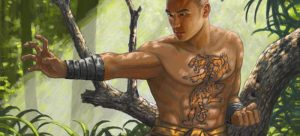
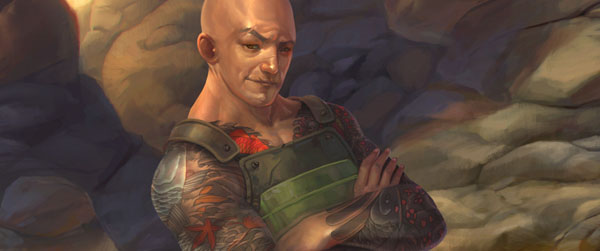

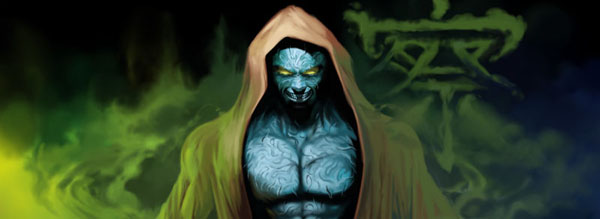
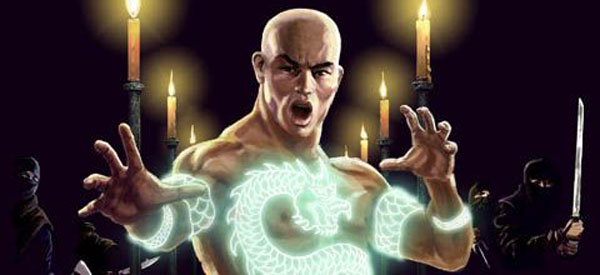


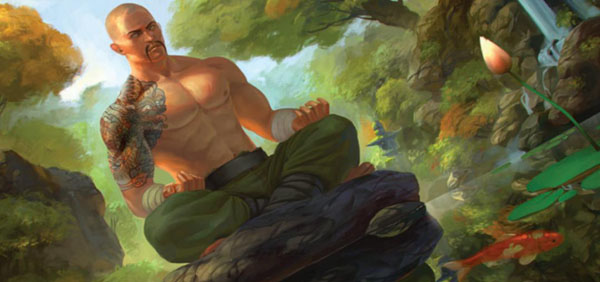

7 Replies to “Dragon Strategy – Fist of Fury”
Im running a 45 conflict deck with Unicorn splash and I will say: the draw strategy is amazing! draw a lot of responses for situations is being nice, and even if you get pressed in honor or een without draw strategy key cards, you can hold the game until the strike back force comes.
I don’t suppose anyone has put these together in fiveringsdb or bushibuilder?
I’m going to try the monk keeper with Phoenix splash (unicorn/crab cards are already spoken for in my other deck)
That means ditching either Mirumoto’s Fury or Against the Waves. Fury’s out for now, struggling to see the replacement atm.
@Bazleebub, a very well written article.
Thanks for posting it. ?
Well done. This has helped quite a bit. I still don’t have all of the cards yet, but at least I know what to look for. Thanks!
“3x Hawk Tattoo – Current speculation is that this card will be everywhere, luckily Dragon get to play it without needing to spend influence. It messes with your opponent’s assignments (…)”
Not anymore (Erratum from 10/17/2018 https://www.fantasyflightgames.com/en/news/2018/10/17/the-path-of-knowledge/ )
The new restricted list shakes this up a bit, but not too much. Realistically, Void Fist is the best of the Dragon restricted cards, so Niten Master and Pathfinders Blade get cut.